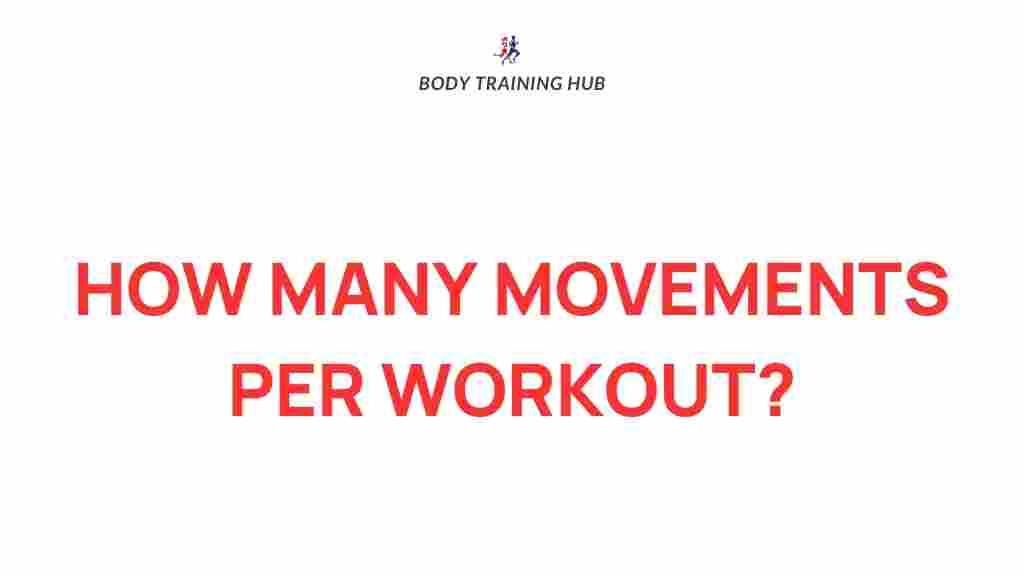Uncover the Science Behind Optimal Workout Movements
When it comes to achieving your fitness goals, understanding the science behind workout movements is crucial. An effective exercise routine is not just about lifting weights or running on a treadmill; it’s about maximizing your training efficiency and targeting the right muscle groups. In this article, we’ll explore the principles behind optimal workout movements, how they contribute to an effective fitness regimen, and provide insights into making the most of your training sessions.
The Importance of Proper Workout Movements
Every workout movement you perform plays a vital role in your overall fitness journey. Here are some reasons why focusing on optimal movements is essential:
- Injury Prevention: Correct form reduces the risk of injuries.
- Increased Efficiency: Targeting specific muscle groups enhances training outcomes.
- Improved Performance: Better movements lead to greater strength and endurance.
- Enhanced Muscle Growth: Effective movements stimulate muscle fibers efficiently.
Understanding Muscle Groups
Before diving into specific workout movements, it’s important to understand the different muscle groups you’ll be targeting:
- Upper Body: Chest, back, shoulders, biceps, and triceps.
- Core: Abdominals, obliques, and lower back.
- Lower Body: Quadriceps, hamstrings, glutes, and calves.
By understanding these groups, you can create a balanced exercise routine that focuses on all areas of the body.
Steps to Create an Optimal Workout Routine
Creating an effective fitness regimen involves several steps. Here’s how you can design a workout routine that maximizes training efficiency.
Step 1: Define Your Goals
Before starting, ask yourself what you want to achieve:
- Do you want to lose weight?
- Are you aiming to build muscle?
- Do you want to improve endurance?
- Are you preparing for a specific event?
Defining your goals helps shape your workout movements and overall strategy.
Step 2: Choose the Right Exercises
Once you have your goals, select exercises that align with them. Here are a few examples:
- For Muscle Building: Compound movements like squats, deadlifts, and bench presses.
- For Endurance: High-intensity interval training (HIIT) and circuit training.
- For Weight Loss: A mix of strength training and cardio.
Focus on movements that engage multiple muscle groups to enhance your training efficiency.
Step 3: Plan Your Workout Schedule
Design a weekly schedule that allows you to mix different types of training. A sample schedule could include:
- Monday: Upper body strength training
- Tuesday: Cardio (running or cycling)
- Wednesday: Lower body strength training
- Thursday: Core workouts
- Friday: Full-body circuit training
- Saturday: Active recovery (yoga or light stretching)
- Sunday: Rest
This balance helps in targeting all muscle groups while allowing for recovery.
Step 4: Focus on Form and Technique
Proper form during workout movements is crucial. Here are some tips:
- Start with lighter weights to master the movement.
- Engage your core during lifts.
- Maintain a neutral spine.
- Use mirrors or trainers for feedback.
Good technique not only prevents injuries but also improves the effectiveness of your workouts.
Step 5: Track Your Progress
Monitoring your progress is essential to stay motivated. Consider keeping a workout journal or using apps to track:
- Weights lifted
- Repetitions and sets
- Duration of cardio sessions
- Body measurements and weight
Tracking helps you see improvements and adjust your exercise routine as needed. For more tips on tracking your fitness journey, check out this resource.
Step 6: Incorporate Variability
Sticking to the same routine can lead to plateaus. Incorporate variability by:
- Changing exercises every few weeks.
- Altering the order of your workouts.
- Varying the number of sets and reps.
This approach keeps your body challenged and promotes continual progress.
Troubleshooting Common Workout Issues
Even with a solid plan, you may encounter challenges. Here are some common issues and how to address them:
Issue 1: Lack of Motivation
If you find yourself lacking motivation:
- Set small, achievable goals.
- Work out with a friend or join a fitness class.
- Mix up your routine to keep it fresh.
Issue 2: Insufficient Recovery
Recovery is as important as the workout itself. If you feel fatigued:
- Ensure you’re getting enough sleep.
- Incorporate rest days into your schedule.
- Consider gentle activities like yoga or walking.
Issue 3: Plateauing Progress
If your progress has stalled:
- Reassess your workout intensity.
- Incorporate different movements to target muscle groups from various angles.
- Consider consulting with a personal trainer.
Conclusion
Understanding the science behind optimal workout movements is integral to achieving your fitness goals. By focusing on an effective exercise routine, choosing the right exercises, and ensuring proper form, you can enhance your training efficiency and see significant results. Remember to define your goals, plan your workouts, and keep track of your progress to stay on the path to success. For additional resources on designing your fitness regimen, visit this website. With dedication and the right approach, you can uncover the full potential of your body through optimal workout movements.
This article is in the category Training Guides and created by BodyTraining Team
